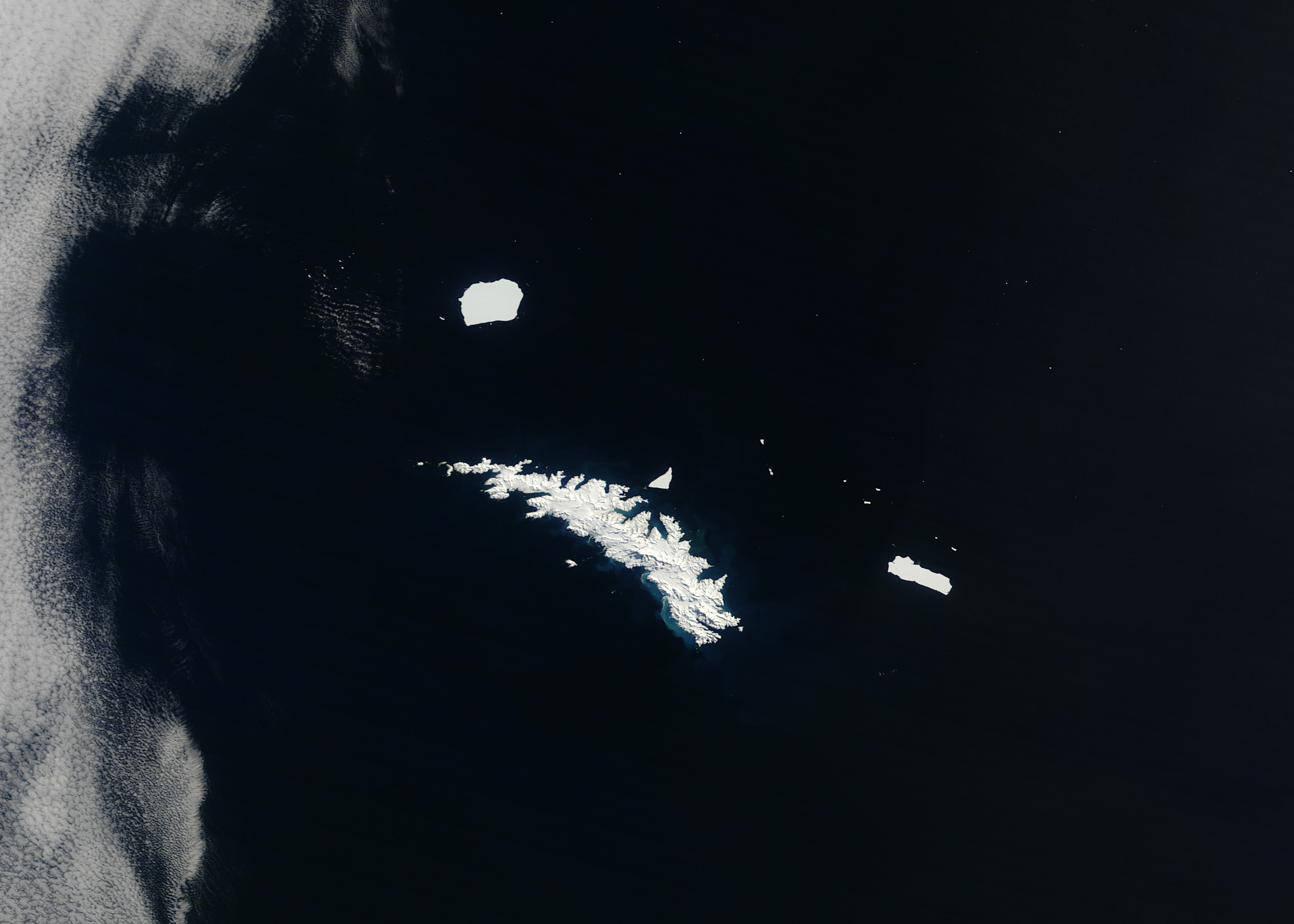Drifting Antarctic Icebergs Seen from Space


As spring began to warm the Southern Hemisphere, a NASA satellite captured a snow-and-ice covered island surrounded by Antarctic icebergs.
NASA's Terra satellite spotted two icebergs, which measured more than 21 miles (35 kilometers) long, floating near South Georgia Island in the southern Atlantic Ocean, with several smaller ice chunks clustered nearby. South Georgia Island itself is only 105 miles (170 km) long from northwest to southeast.
Thanks to unusually clear skies, the Moderate Resolution Imaging Spectroradiometer (MODIS) on acquired this natural-color image on Sept. 29. Off the island's northwestern tip was Iceberg C-19C, a remnant of the larger Iceberg C-19, which calved off Antarctica's Ross Ice Shelf in May 2002. To the southeast is Iceberg B-15F, a remnant of Iceberg B-15, which calved off the Ross Ice Shelf in March 2000.
Iceberg calving is a natural process where a huge chunk of ice breaks off from a glacier or ice shelf and slowly moves out to sea, gradually disintegrating into smaller pieces.
When MODIS captured the image, wisps of blue-green colored the water off the island's southwestern coast. The color likely comes from glacial flour — fine, powdery sediment that forms as glaciers grind down rocks beneath them, Norman Kuring of the Ocean Color Team at NASA's Goddard Space Flight Center said in a statement. The sediment washed out to sea from glaciers on South Georgia Island, he said.
The presence of icebergs in this region is not unusual. Antarctic icebergs tend to get caught up in deep ocean currents that return the icebergs to this region again and again, Ted Scambos of the National Snow and Ice Data Center said in a statement. In January 2004, much larger icebergs congregated off South Georgia's shores, according to NASA.
Get the world’s most fascinating discoveries delivered straight to your inbox.



